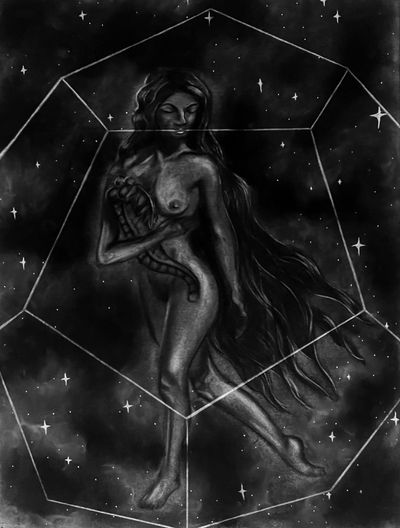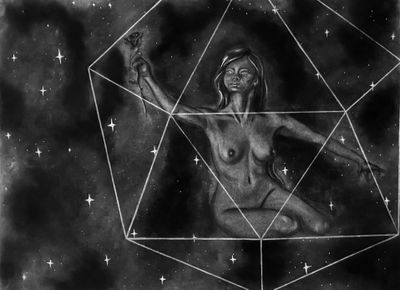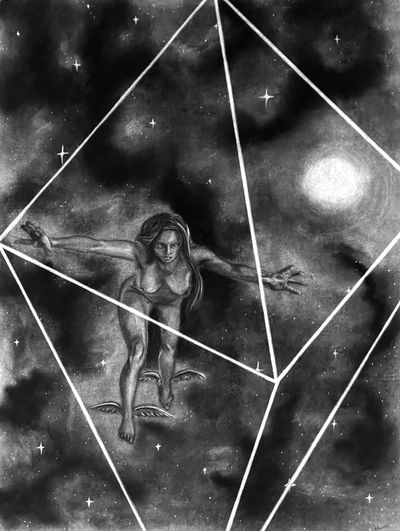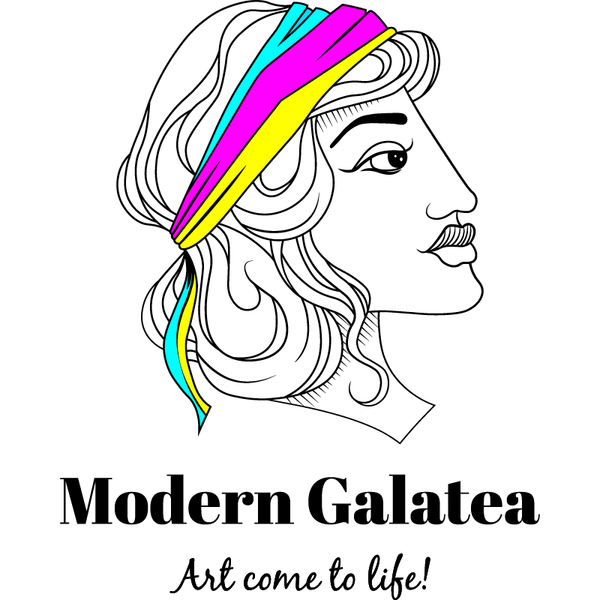Longing for Impossible Things
The Dividivi Tree (also known as Watapana) from Aruba inspired me to draw this piece. I drew it for a class assignment which asked for a psychological landscape drawing. It took me 7.5 hours in total. Charcoal on 18 by 24 medium weight strathmore paper.
Year
2017
Medium
Charcoal
Themes
Interested in this piece?
Contact me to discuss purchase, commissioning, or to learn more about this artwork.
Contact ArtistMore from Charcoal

The Celestial Occult Trilogy (Earth)
2024
Inspired in Kepler's book, Mysterium Cosmographicum (1596), I took from his initial planetary theory and the ancient association of nature and the feminine. In geometry, I have always loved the Platonic Solids, and I really enjoyed how Kepler incorporated them in his book about the planets. I also used additional symbology in order to complete each piece and make it more complete and identifiable. This is the representation of the Earth, enclosed in its orbit as described by Kepler, a dodecahedron. Charcoal on 18 by 24 medium weight strathmore paper.

The Celestial Occult Trilogy (Venus)
2024
Inspired in Kepler's book, Mysterium Cosmographicum (1596), I took from his initial planetary theory and the ancient association of nature and the feminine. In geometry, I have always loved the Platonic Solids, and I really enjoyed how Kepler incorporated them in his book about the planets. I also used additional symbology in order to complete each piece and make it more complete and identifiable. This is the representation of Venus, enclosed in its orbit as described by Kepler, a icosahedron. Charcoal on 18 by 24 medium weight strathmore paper.

The Celestial Occult Trilogy (Mercury)
2024
Inspired in Kepler's book, Mysterium Cosmographicum (1596), I took from his initial planetary theory and the ancient association of nature and the feminine. In geometry, I have always loved the Platonic Solids, and I really enjoyed how Kepler incorporated them in his book about the planets. I also used additional symbology in order to complete each piece and make it more complete and identifiable. This is the representation of Mercury, enclosed in its orbit as described by Kepler, an octahedron. Charcoal on 18 by 24 medium weight strathmore paper.



